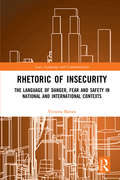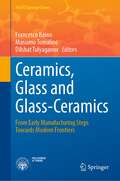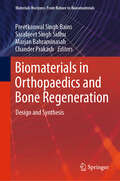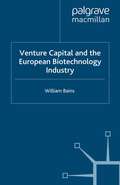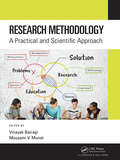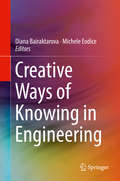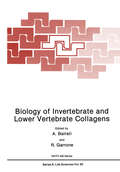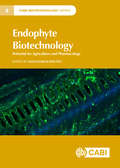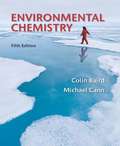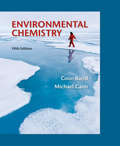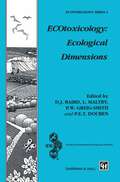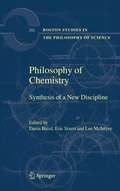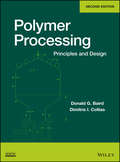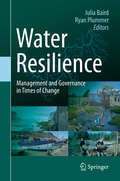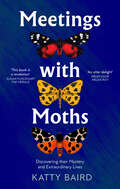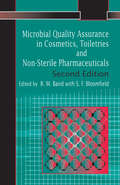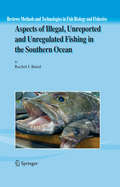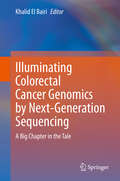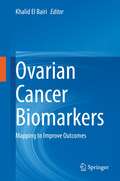- Table View
- List View
Rhetoric of InSecurity: The Language of Danger, Fear and Safety in National and International Contexts (Law, Language and Communication)
by Victoria BainesThis book demands that we question what we are told about security, using tools we have had for thousands of years. The work considers the history of security rhetoric in a number of distinct but related contexts, including the United States’ security strategy, the "war" on Big Tech, and current concerns such as cybersecurity. Focusing on the language of security discourse, it draws common threads from the ancient world to the present day and the near future. The book grounds recent comparisons of Donald Trump to the Emperor Nero in a linguistic evidence base. It examines the potential impact on society of policy-makers’ emphasis on the novelty of cybercrime, their likening of the internet to the Wild West, and their claims that criminals have "gone dark". It questions governments’ descriptions of technology companies in words normally reserved for terrorists, and asks who might benefit. Interdisciplinary in approach, the book builds on existing literature in the Humanities and Social Sciences, most notably studies on rhetoric in Greco-Roman texts, and on the articulation of security concerns in law, international relations, and public policy contexts. It adds value to this body of research by offering new points of comparison, and a fresh but tried and tested way of looking at problems that are often presented as unprecedented. It will be essential to legal and policy practitioners, students of Law, Politics, Media, and Classics, and all those interested in employing critical thinking.
Rhetoric of InSecurity: The Language of Danger, Fear and Safety in National and International Contexts (Law, Language and Communication)
by Victoria BainesThis book demands that we question what we are told about security, using tools we have had for thousands of years. The work considers the history of security rhetoric in a number of distinct but related contexts, including the United States’ security strategy, the "war" on Big Tech, and current concerns such as cybersecurity. Focusing on the language of security discourse, it draws common threads from the ancient world to the present day and the near future. The book grounds recent comparisons of Donald Trump to the Emperor Nero in a linguistic evidence base. It examines the potential impact on society of policy-makers’ emphasis on the novelty of cybercrime, their likening of the internet to the Wild West, and their claims that criminals have "gone dark". It questions governments’ descriptions of technology companies in words normally reserved for terrorists, and asks who might benefit. Interdisciplinary in approach, the book builds on existing literature in the Humanities and Social Sciences, most notably studies on rhetoric in Greco-Roman texts, and on the articulation of security concerns in law, international relations, and public policy contexts. It adds value to this body of research by offering new points of comparison, and a fresh but tried and tested way of looking at problems that are often presented as unprecedented. It will be essential to legal and policy practitioners, students of Law, Politics, Media, and Classics, and all those interested in employing critical thinking.
Ceramics, Glass and Glass-Ceramics: From Early Manufacturing Steps Towards Modern Frontiers (PoliTO Springer Series)
by Francesco Baino Massimo Tomalino Dilshat TulyaganovThis book presents a state-of-the-art overview of the major aspects involved in the science, technology and applications of ceramics, glasses and glass-ceramics. After providing an historical perspective of the development and use of ceramics and glasses along the Silk Road, the theoretical background and fabrication techniques of such materials are described and discussed. A special focus is dedicated to emerging high-tech applications in various fields, including medicine, energy, optics and photonics, sensors, sustainability and circular economy. The chapters are written by leading experts in their respective fields and highlight the contemporary challenges associated to each topic. This book will serve as a valuable reference for both early-stage and skilled researchers as well as industry professionals interested in the broad field of glasses and ceramics.
Biomaterials in Orthopaedics and Bone Regeneration: Design and Synthesis (Materials Horizons: From Nature to Nanomaterials)
by Preetkanwal Singh Bains Sarabjeet Singh Sidhu Marjan Bahraminasab Chander PrakashThis book focuses on the recent advances in the field of orthopaedic biomaterials, with a particular emphasis on their design and fabrication. Biomimetic materials, having similar properties and functions to that of the natural tissue, are becoming a popular choice for making customized orthopaedic implants and bone scaffolds. The acceptability of these materials in the human body depends on the right balance between their mechanical and biological properties. This book provides a comprehensive overview of the state-of-the-art research in this rapidly evolving field. The chapters cover different aspects of multi-functional biomaterials design, and cutting-edge methods for the synthesis and processing of these materials. Advanced manufacturing techniques, like additive manufacturing, used for developing new biomimetic materials are highlighted in the book. This book is a valuable reference for students and researchers interested in biomaterials for orthopaedic applications.
Venture Capital and the European Biotechnology Industry
by W. BainsThis book opens up the world on private equity investment in one of the hottest industries – Biotechnology. The book describes how Europe has fallen behind the US due to under-investment and bad management by the VCs who control the companies. Detailed analysis shows why it is in VCs' interests to damage the very companies they invest in.
Research Methodology: A Practical and Scientific Approach
by Vinayak Bairagi Mousami V. MunotThis book offers a design research methodology intended to improve the quality of design research- its academic credibility, industrial significance and societal contribution by enabling more thorough, efficient and effective procedures.
Research Methodology: A Practical and Scientific Approach
by Vinayak Bairagi Mousami V. MunotThis book offers a design research methodology intended to improve the quality of design research- its academic credibility, industrial significance and societal contribution by enabling more thorough, efficient and effective procedures.
Creative Ways of Knowing in Engineering
by Diana Bairaktarova Michele EodiceThis book offers a platform for engineering educators who are interested in implementing a “creative ways of knowing” approach to presenting engineering concepts. The case studies in this book reveal how students learn through creative engagement that includes not only design and build activities, but also creative presentations of learning, such as composing songs, writing poems and short stories, painting and drawing, as well as designing animations and comics. Any engineering educator will find common ground with the authors, who are all experienced engineering and liberal arts professors, who have taken the step to include creative activities and outlets for students learning engineering.
Biology of Invertebrate and Lower Vertebrate Collagens (Nato Science Series A: #93)
by A. BairatiKnowledge in the field of the biology of the extracellular matrix, and in particular of collagen, has made considerable progress over the last ten years, especially in mammals, birds and ln man with respect to very important applied medical aspects. Basic knowledge in the animal kingdom overall has increased more slowly and haphazardly. We, therefore, considered it useful to organize a meeting specifically devoted to the study of the invertebrate and lower vertebrate collagens. The NATO Scientific Division financed an Advanced Research Workshop aimed at bringing together experts qualified in collagen biology (with morphological, biochemical and genetic specialization) with researchers who are currently studying collagenous tissues of invertebrates and lower vertebrates. The Medical-Biology Committee of the CNR-Rome and the University of Milan also supplied interest and support for the organization of this Meeting. The format of the workshop consisted in: 1) main lectures on the most recent aspects of collagen biology; 2) minireviews on the current knowledge of collagenous tissues in the various invertebrate phyla and in fish; 3) contributed papers on particular aspects of research in specific fields; 4) workshops on the methodology of studying collagen. As we had intended, the Workshop gave a comprehensive overview of acquired knowledge and of the present state of research actlvlty. It permitted wide interdisciplinary discussion, enabling collabora tions to be established and new research themes to be chosen. This volume contains the text of all the contributions presented at the Meeting, including posters.
Endophyte Biotechnology: Potential for Agriculture and Pharmacology (CABI Biotechnology Series)
by Alec Baird Gabriele Berg Alessandro Bergna John R. Caradus Tomislav Cernava Sang Cho Stéphane Compant Amanda F. Currie Sherif S. Ebada Weaam Ebrahim Alan C. Gange Pablo A. García-Parisi Zachery Gray Evan Groover Roman Harto Marian Hsieh Linda J. Johnson Jutta Ludwig-Müller Katie Malmberg Ryan Manglona Malia Mercer Christina A. Müller Natalie Nasman Tatiana Nicklason Melanie M. Obermeier Marina Omacini Peter Proksch Peter Fredman Melissa Rienstra Rusty Rodriguez Jessica-Rose Spong Corinne Vacher Alex Van Inwegen Andy VanHooser Christin ZachowEndophytes are bacterial and fungal microorganisms that colonize plants without usually eliciting visible disease symptoms but establishing intricate and mutually beneficial interactions with their host plant. This can lead to an increase in plant vigour, growth, development, and changes in plant metabolism. Endophytes may assist in the development of more productive and sustainable agricultural practices or discoveries of novel pharmacologicals. These elusive organisms are often overlooked and their benefits underrated. Endophytes can support plants in a variety of ways to cope with biotic and abiotic stress factors, such as drought, heat, pest and diseases. They can produce particular metabolites, facilitate access to nutrients, change the plant's chemistry, physiology and responses, or by a combination of these factors. The biosynthetic pathways present in endophytes alone or in combinations with the plant's, can lead to novel chemicals, with yet undiscovered pharmacological characteristics. With state-of-the-art knowledge on their discovery and roles, this book describes the diversity of endophytes, their value, exploitation and future challenges. Key features: Provides an overview of the endophytes that are encountered in nature. Demonstrates the beneficial effects of endophytes together with their practical applications in agriculture. Explores how endophytes are valuable candidates for research on future drugs and biopesticides. This title is a valuable resource for students and researchers in plant science and plant pathology as well as those working in the pharmaceutical and pesticide industries.
Environmental Chemistry
by Colin Baird MICHAEL CANNColin Baird and Michael Cann’s acclaimed textbook helps students explore chemical processes and properties underlying environmental issues they hear about and discuss every day. Issues such as climate change, pollution, biofuels, sustainability and many more are dissected throughout the title. With an updated and balanced coverage of soil, water and air chemistry, the fifth edition pays close attention to the environmental impacts of chemical production and experimentation. A textbook that stands out from others looking at environmental chemistry as it makes these environmental problems accessible to students.
Environmental Chemistry
by Colin Baird MICHAEL CANNColin Baird and Michael Cann’s acclaimed textbook helps students explore chemical processes and properties underlying environmental issues they hear about and discuss every day. Issues such as climate change, pollution, biofuels, sustainability and many more are dissected throughout the title. With an updated and balanced coverage of soil, water and air chemistry, the fifth edition pays close attention to the environmental impacts of chemical production and experimentation. A textbook that stands out from others looking at environmental chemistry as it makes these environmental problems accessible to students.
ECOtoxicology: Ecological Dimensions (Ettore Majorana International Science Series)
by D. J. Baird P. E. Douben P. Greig-Smith L. MaltbyEcotoxicology is a relatively new scientific discipline. Indeed, it might be argued that it is only during the last 5-10 years that it has come to merit being regarded as a true science, rather than a collection of procedures for protecting the environment through management and monitoring of pollutant discharges into the environment. The term 'ecotoxicology' was first coined in the late sixties by Prof. Truhaut, a toxicologist who had the vision to recognize the importance of investigating the fate and effects of chemicals in ecosystems. At that time, ecotoxicology was considered a sub-discipline of medical toxicology. Subsequently, several attempts have been made to portray ecotoxicology in a more realistic light. Notably, both Moriarty (1988) and F. Ramade (1987) emphasized in their books the broad basis of ecotoxicology, encompassing chemical and radiation effects on all components of ecosystems. In doing so, they and others have shifted concern from direct chemical toxicity to humans, to the far more subtle effects that pollutant chemicals exert on natural biota. Such effects potentially threaten the existence of all life on earth. Although I have identified the sixties as the era when ecotoxicology was first conceived as a coherent subject area, it is important to acknowledge that studies that would now be regarded as ecotoxicological are much older.
Philosophy of Chemistry: Synthesis of a New Discipline (Boston Studies in the Philosophy and History of Science #242)
by Davis Baird Eric Scerri Lee McIntyreThis comprehensive volume marks a new standard in scholarship in the emerging field of the philosophy of chemistry. Philosophers, chemists, and historians of science ask some fundamental questions about the relationship between philosophy and chemistry.
Polymer Processing: Principles and Design
by Donald G. Baird Dimitris I. ColliasFundamental concepts coupled with practical, step-by-step guidance With its emphasis on core principles, this text equips readers with the skills and knowledge to design the many processes needed to safely and successfully manufacture thermoplastic parts. The first half of the text sets forth the general theory and concepts underlying polymer processing, such as the viscoelastic response of polymeric fluids and diffusion and mass transfer. Next, the text explores specific practical aspects of polymer processing, including mixing, extrusion dies, and post-die processing. By addressing a broad range of design issues and methods, the authors demonstrate how to solve most common processing problems. This Second Edition of the highly acclaimed Polymer Processing has been thoroughly updated to reflect current polymer processing issues and practices. New areas of coverage include: Micro-injection molding to produce objects weighing a fraction of a gram, such as miniature gears and biomedical devices New chapter dedicated to the recycling of thermoplastics and the processing of renewable polymers Life-cycle assessment, a systematic method for determining whether recycling is appropriate and which form of recycling is optimal Rheology of polymers containing fibers Chapters feature problem sets, enabling readers to assess and reinforce their knowledge as they progress through the text. There are also special design problems throughout the text that reflect real-world polymer processing issues. A companion website features numerical subroutines as well as guidance for using MATLAB®, IMSL®, and Excel to solve the sample problems from the text. By providing both underlying theory and practical step-by-step guidance, Polymer Processing is recommended for students in chemical, mechanical, materials, and polymer engineering.
Polymer Processing: Principles and Design
by Donald G. Baird Dimitris I. ColliasFundamental concepts coupled with practical, step-by-step guidance With its emphasis on core principles, this text equips readers with the skills and knowledge to design the many processes needed to safely and successfully manufacture thermoplastic parts. The first half of the text sets forth the general theory and concepts underlying polymer processing, such as the viscoelastic response of polymeric fluids and diffusion and mass transfer. Next, the text explores specific practical aspects of polymer processing, including mixing, extrusion dies, and post-die processing. By addressing a broad range of design issues and methods, the authors demonstrate how to solve most common processing problems. This Second Edition of the highly acclaimed Polymer Processing has been thoroughly updated to reflect current polymer processing issues and practices. New areas of coverage include: Micro-injection molding to produce objects weighing a fraction of a gram, such as miniature gears and biomedical devices New chapter dedicated to the recycling of thermoplastics and the processing of renewable polymers Life-cycle assessment, a systematic method for determining whether recycling is appropriate and which form of recycling is optimal Rheology of polymers containing fibers Chapters feature problem sets, enabling readers to assess and reinforce their knowledge as they progress through the text. There are also special design problems throughout the text that reflect real-world polymer processing issues. A companion website features numerical subroutines as well as guidance for using MATLAB®, IMSL®, and Excel to solve the sample problems from the text. By providing both underlying theory and practical step-by-step guidance, Polymer Processing is recommended for students in chemical, mechanical, materials, and polymer engineering.
Television and Me: The Memoirs of John Logie Baird
by John Logie Baird‘A fabulous distillation of all the joy and bitterness, hurt and humour of an extraordinary man… I doubt there will be a better written, more interesting or important book published in Scotland this year.’— Daily Mail (2004)‘Funds were going down, the situation was becoming desperate and we were down to our last £30 when at last, one Friday in the first week of October 1925, everything functioned properly. The image of the dummy’s head formed itself on the screen with what appeared to me almost unbelievable clarity. I had got it! I could scarcely believe my eyes, and felt myself shaking with excitement.’In one of the most extraordinary and entertaining autobiographies to be written by any scientist or inventor, John Logie Baird tells the story of his life and the scientific journey which led to the creation of television. He writes with blunt candour and caustic wit about his childhood in Scotland and the wild escapades of his early business career, when he marketed his own patent brand of medicated undersocks, failed in a hilarious attempt to set up a jam-making factory in the Caribbean and went on to sell soap wholesale. Then he gives the definitive account of the epoch-making experiments through which television was created, and his later troubled relationship with the fledgling BBC and his bête noir, Lord Reith, who disliked television. The BBC obstructed and snubbed Baird at every opportunity.Some of his commercial and scientific rivals made a concerted attempt to discredit his status as the central figure in the invention of television, and even today, this has led to his importance being misunderstood. This new edition of his grippingly readable autobiography, edited and introduced by Baird’s only son, Malcolm, will help to set the record straight.
Water Resilience: Management and Governance in Times of Change
by Julia Baird Ryan PlummerThis book synthesizes current knowledge and understanding of management and governance in the context of water resilience; advances theory through synthesis of research and experiences from a variety of disciplinary perspectives. The book highlights the implications of theory and experience for innovation in practice and policy; and it explores frontiers and future research. The book further addresses the need for a consolidated, interdisciplinary approach to the theoretical advances and practical implications of water resilience for academics, resource managers, aid organizations, policy makers and citizens.
Meetings with Moths: Discovering Their Mystery And Extraordinary Lives
by Katty BairdMossy greens, conker browns, cream, chocolate and deepest black; add stripes, swirls and splotches and you have some of the most striking wildlife Britain has to offer.
Microbial Quality Assurance in Pharmaceuticals, Cosmetics, and Toiletries
by R. Baird Sally F. BloomfieldThe importance of quality assurance in the production, storage and use of manufactured preparations is widely recognized. This book encapsulates the issues involved in the manufacture of non-steriles, such as creams, ointments, herbal remedies, shampoos, soaps and toiletry products (as opposed to sterile drugs and injectible products). Knowledge of the microbial limits is expanded, new standards are included, and coverage of the preservation issues of dosage forms is widened to include semi-solids and liquid preparations. This edition also contains new regulations regarding preservative efficacy testing and covers pharmacopoeial and industry regulations and guidelines. Rapid methods are also discussed, now more common in cosmetic and toiletry practice, in their pharmaceutical capacity.
Microbial Quality Assurance in Pharmaceuticals, Cosmetics, and Toiletries
by R. Baird Sally F. BloomfieldThe importance of quality assurance in the production, storage and use of manufactured preparations is widely recognized. This book encapsulates the issues involved in the manufacture of non-steriles, such as creams, ointments, herbal remedies, shampoos, soaps and toiletry products (as opposed to sterile drugs and injectible products). Knowledge of the microbial limits is expanded, new standards are included, and coverage of the preservation issues of dosage forms is widened to include semi-solids and liquid preparations. This edition also contains new regulations regarding preservative efficacy testing and covers pharmacopoeial and industry regulations and guidelines. Rapid methods are also discussed, now more common in cosmetic and toiletry practice, in their pharmaceutical capacity.
Aspects of Illegal, Unreported and Unregulated Fishing in the Southern Ocean (Reviews: Methods and Technologies in Fish Biology and Fisheries #5)
by Rachel BairdIllegal, Unreported and Unregulated (IUU) fishing threatens the viability of high seas living resources. This book details the efforts of the Convention for the Conservation of Antarctic Marine Living Resources Commission and the Australian government to adopt complementary measures to deter IUU fishing in the Southern Ocean. It describes how these various measures have proven effective in deterring IUU operators.
Manipulation and Characterization of Electrosprayed Ions Under Ambient Conditions: Methods and Instrumentation (Springer Theses)
by Zane BairdThis thesis addresses the evolving field of measurement science, specifically that of mass spectrometry (MS) and ion mobility spectrometry (IMS) based techniques. It focuses on the design, construction and implementation of low-cost, easy-to-manufacture measurement tools that are used in modern settings such as airport security screening. Advances in these technologies often involve minimal performance enhancement at ever-increasing cost, which in turn limits accessibility to versatile measurement tools. This problem is addressed using desktop 3D printers along with widely available materials for the production of novel ion lenses and an IMS instrument with a performance comparable to that of many commercial systems.Baird´s findings are a source of inspiration for scientists exploring this emerging field.
Illuminating Colorectal Cancer Genomics by Next-Generation Sequencing: A Big Chapter in the Tale
by Khalid El BairiThis book reviews the potential of next-generation sequencing (NGS) in research on and management of colorectal cancer (CRC), a leading cause of death worldwide and one of the most biologically and clinically heterogeneous cancers. It critically discusses findings from recent large-scale studies, clinical trials and meta-analyses and offers an introduction to the management of CRC in the era of precision medicine. In CRC, dozens of driver and passenger mutations are associated with the malignant transformation of epithelial cells. Consequently, the book discusses recent advances in our understanding of the genetics of CRC as a biomarker, the advent of NGS technologies in modern genomics, and the impact of NGS technology on the management of CRC. Furthermore, it highlights the potential of NGS in the context of liquid biopsy and single-cell sequencing in CRC, as well as its role in shedding light on the link between gut microbiota, immune-checkpoint blockade and CRC. The book concludes with a chapter on the limitations and cost-effectiveness of NGS in CRC. Given its scope, the book will appeal to all those interested in learning about the potential of NGS in advancing CRC research and patient care.
Ovarian Cancer Biomarkers: Mapping to Improve Outcomes
by Khalid El BairiThis book comprehensively summarizes the biology, etiology, and pathology of ovarian cancer and explores the role of deep molecular and cellular profiling in the advancement of precision medicine. The initial chapter discusses our current understanding of the origin, development, progression and tumorigenesis of ovarian cancer. In turn, the book highlights the development of resistance, disease occurrence, and poor prognosis that are the hallmarks of ovarian cancer. The book then reviews the role of deep molecular and cellular profiling to overcome challenges that are associated with the treatment of ovarian cancer. It explores the use of genome-wide association analysis to identify genetic variants for the evaluation of ovarian carcinoma risk and prognostic prediction. Lastly, it highlights various diagnostic and prognostic ovarian cancer biomarkers for the development of molecular-targeted therapy.
